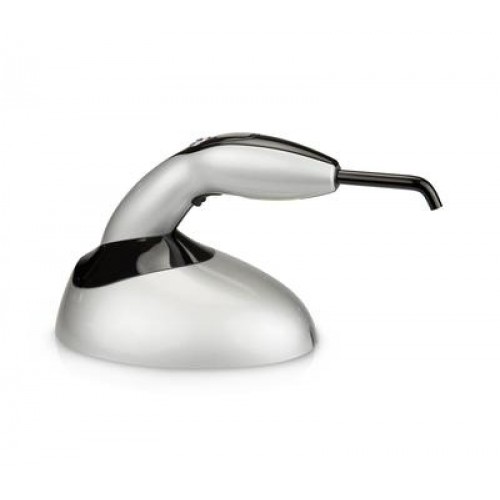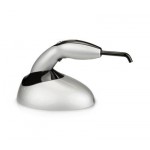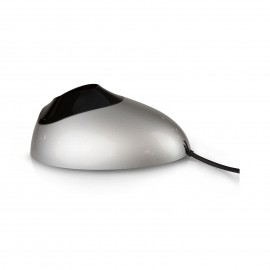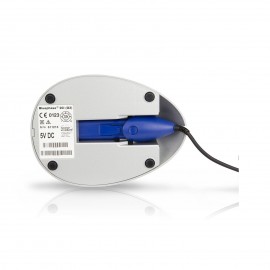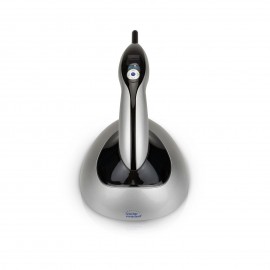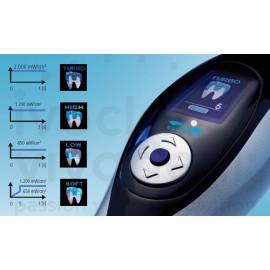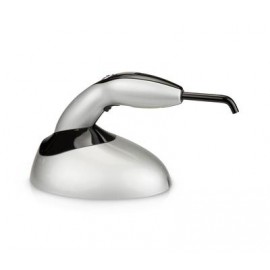Ivoclar Bluephase 20i G2 LED Curing Light
OverView
Ivoclar Bluephase 20i G2 LED Curing LightFor fast ORDERING experience Visit our new site  www.medicabasket.com
www.medicabasket.com
NOTE: Due to volatility in dental market, Price and stock shown here are tentative and needed approval of supplier, Although we update frequently. Our Team will your order soon.
COD is not available now.
Call/ WhatsApp on +91-9313922999 / +91-9810283698

- Information
-
Dental Brands
- 3M Espe
- 3M Unitek
- A.J. Wilcock
- Agfa
- American Orthodontics
- Ammdent
- Anabond
- Angelus
- API Ashoosons
- API Instruments
- Apple Dental
- Being Foshan
- Bestodent
- Bien Air
- BIOLASE
- Blossom
- Bombay Dental
- Capri
- Captain Ortho
- Cerkamed
- Colgate
- Coltene Whaledent
- Confident
- D-Tech
- Danville
- Denext
- Dental Books
- Dental-Avenue
- Dentaurum
- Dentium
- Dentsply
- Desires ortho
- Detax Dental
- Diadent
- Dispodent
- DMG
- DPI
- Durr Dental
- Eighteeth
- Eltee Instruments
- Endoking
- Euronda S.P.A
- Fgm
- Fuji film
- G&H
- GC
- Gen-XT Implant
- Gendex
- Genoray
- Green Guava
- Hahnenkratt
- Heraeus Kulzer
- Horico
- Hu-Friedy
- ICPA
- Ids Denmed
- IMDSL Laser
- Itena
- Ivoclar Vivadent
- J Morita
- Jota
- Kalabhai
- Kavo
- Kerr
- Kodak
- Labomed
- Leone
- Libral
- Life Steriware
- Maarc
- Mani
- Marathon
- MDC
- Medicept
- Meta
- Modern ortho
- Moriz
- Navadha
- Neelkanth
- NeoEndo
- Novabone
- NSK
- Oracura
- Orateek
- Orchestrate O3D Aligner
- Ormco
- Oro
- Ortho Classic
- Ortho Organizers
- Ortho Technology
- Orthocare
- Orthosource
- Premier
- Prevest
- Prima Dental
- Pulpdent
- Pyrax Dental
- Rabbit Force Ortho
- Rejove 32Watts Aligners
- RS Dental Chair
- Ruby Dental
- Ruthinium
- Saeshin
- Samit
- Scheu
- SDI
- Septodont
- Shivam Dental
- Shofu
- SK Surgicals
- Skydent
- SS-White
- Strong
- Sun Medical
- Sure Endo
- Surgiwear
- Tokuyama
- TP Orthodontics
- Unicorn
- Unident
- Unique
- Vatech
- VDW
- VeeCare
- Vita
- Voco
- VRN
- W&H
- Waldent Equipment
- Waldent Instruments
- Waldent Material
- Woodpecker
- Zhermack
- Zoom
- Triodent
- Other brands
- Offers & Combos
- Contact Us
-
Product Category
- Composites & Restoratives
- Dental Education
-
Dental Equipment
- Air-Motor
- Apex Locators
- Autoclaves & Sterilizers
- Dental Air Compressor
- Dental Chair
- Dental Chair Accessories
- Dental Handpiece
- Dental Laser
- Dental Loupes
- Dental Surgery
- Endo Motor
- Handpiece Cartridge
- Implant Motors
- Intraoral Camera
- LED Light Cure
- Micromotors
- Microscope
- Radiology
- Suction Units
- Ultrasonic Scalers
- UV Chamber
- Dental Lab
- Endodontics
- Implantology
- Instruments And Burs
- New Clinic Setup Kits
- Oral Surgery
- Paedodontics
- Periodontics
- Prosthodontics
- Sterilization & COVID-19 Supplies
- General Dentistry
-
Ortho Store
- Arch Wires & Springs
- Bonding Adhesives
- Elastomerics
- Expansion Screws
- Headgear accessories
- Laboratory Products
- Mini TAD Screw
- Molar Bands and Tubes
- Ortho Attachments
- Photographic Accessories
- Weldable Accessories
- Braces or Brackets
- Clear Aligners
- Orthodontic Appliances
- Orthodontic IPR solutions
- Orthodontic Instruments
- Find Your Dentist
- Medica Basket
Your shopping cart is empty!
Ivoclar Bluephase 20i G2 LED Curing Light
Features :
The Bluephase 20i is high-performance LED curing light with a light intensity of 2,000 mW/cm2 offering curing times as fast as 5 seconds.
Bluephase 20i is an LED polymerization light that produces energy-rich blue light. It is used for the polymerization of light-curing dental materials immediately at the dental unit. The intended use also includes the observation of the notes and regulations in these Instructions for Use
INDICATIONS:
- With its “Polywave” broadband spectrum, Bluephase is suitable for the polymerization of all light-curing dental materials curing in the wavelength range of 385–515 nm. These materials include restoratives, bonding agents/ adhe-sives, bases, liners, fissure sealants, temporary materials as well as luting materials for brackets and dental-lab materials such as those used in the fabrication of ceramic inlays
ADVANTAGES:
- 4 modes of operation
- Polywave LED featuring “halogen-like” broadband spectrum of 385-515nm suitable for curing all dental materials
- Unrestricted use without clinical limitations
- “Click & Cure” corded back-up power supply, independent of the battery.
- Cordless design for ultimate portability
- Seamless construction of the housing for optimum hygiene
- Innovative movement sensor for immediate operation
- 3-year warranty (1-year warranty for battery)
- 10>8mm light probe
Key Specifications
Light intensity
- The light intensity is maintained at a consistent level during operation. If the supplied 10>8 mm light probe is used, the light intensity has been calibrated to 2,000 - 2,200 mW/cm2 . The use of a light probe other than the one provided has a direct influence on the light intensity emitted.
- In parallel-walled light probes (10 mm), the diameter is equal at both ends. In focussing light probes (10>8 mm light probe, Pin-Point light probe 6>2 mm), the diameter of the rear end is larger than that of the light emission window. The incident blue light is thus bundled to a smaller surface, which increases the light intensity emitted. Pin-Point light probes are suitable for the polymerization of confined areas, such as the attachment of veneers prior to excess removal.
- For thorough curing, it is necessary to change the light probe.
TECHNICAL SPECIFICATIONS:
| Light intensity | 2,000 - 2,200 mW/cm2 |
| Dimensions of the handpiece | L=260mm; W=42mm; H=120mm |
| Max. battery time | approx. 45 min. (with a new, fully charged battery) |
Packaging
- Handpiece
- Start button
- Display
- Program selection button
- Time selection button
- Volume button
- Power indicator
- Charging base
- Power cord
- Power pack
- Battery Light probe 10>8 mm
- Anti-glare shield
- Anti-glare cones
Direction to Use
Start
The light is switched on by means of the start button. Once the selected curing time has elapsed, the curing program is automatically terminated. If desired, the light can be switched off before the set curing time has elapsed by pressing the start button again. The fan is activated simultaneously to the light. Once the curing time has elapsed, the fan continues to run for a certain time to cool the apparatus. The battery must not be removed as long as the fan is still running
Acoustic signals
- Acoustic signals can be heard for the following functions:
- Start (Stop)
- Every 10 seconds
- Program change
- Curing time change
- Connecting the battery to the charging base
- Inserting battery
- Error message
Measuring the light intensity
- The light intensity of the Bluephase 20i and the supplied 10>8 mm light probe can be checked, for instance, by means of the Bluephase Meter. If the measured value does not correspond with the expected light intensity, proceed as follows:
- Check the selected curing program
- Clean light sensor if it is contaminated
- Remove the light probe and clean the light emission window of the handpiece with a cotton swab dipped in alcohol
- Clean light probe if it is contaminated (see Maintenance and cleaning)
- Replace a damaged light probe with a new one



